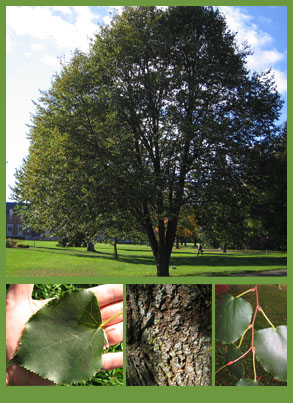Class: Magnoliopsida
Order: Malvales
Family: Tiliaceae
The European Basswood is also known as the linden, lime tree, or the tilleul. It can have a diameter of 2-3 wide and can get up to 140 tall. The bark has a dark color and is shallowly grooved. The leaves are medium-sized, heart shaped leaves with finely toothed perimeters and uneven bases. They bloom from June through August producing petit yellow flowers which are very fragrant. The seeds are found encapsulated in fleshy seedpods with a feather portion, often referred to as “helicopter-like” pods. These seed pods are very similar to the ones found on maple trees. While the American Basswood has an average weight of 27 pounds per cubic foot, European lime’s average weight is 34 pounds per cubic foot.
The wood of the European basswood dries fairly rapidly with only a small amount of shrinkage. It is so small that there is little cracking or twisting or warping in the dried wood. Basswood is a soft wood so it is easy to work with, using hand or machine. Basswood also glues, nails and screws well. Although it finishes easily and well, it is non-durable and it has little or no grain pattern. Although Basswood does not have the best qualities for permanent building material it is still considered one of the best woods for carving and is often called the “carver’s choice.” It is also used for hat blocks, piano keys, harps, toys, artificial limbs, clogs and shoe soles.
Long ago, Native Europeans used the inner bark fibers to make rope, thread and a crude fabric, said to be even more durable than hemp. The bark was used to make a durable type of bandage and used in mask making and for carving figurines.
Many species of Tilia in Europe have long been planted as landscape trees. The basswoods and all the lime trees are often called boulevard trees and are used for decorative purposes, although there is a downside to their use if used for décor in a public area. The basswood leaves from the trees tend to attract aphids and the flowers of the trees drip a sticky mess of sugar, wax and oils that also attracts insects.
Back
|
 |